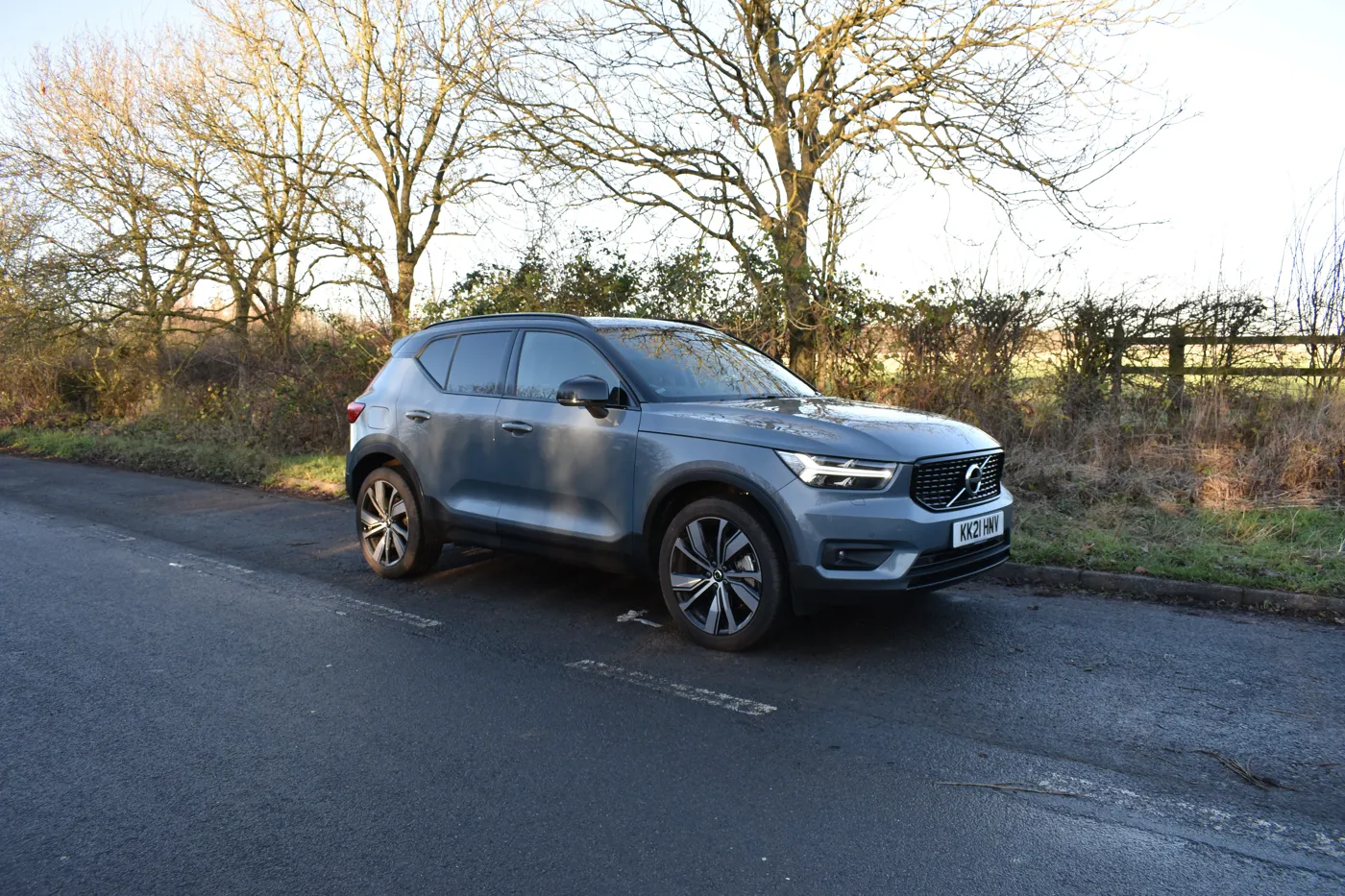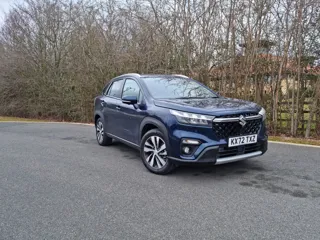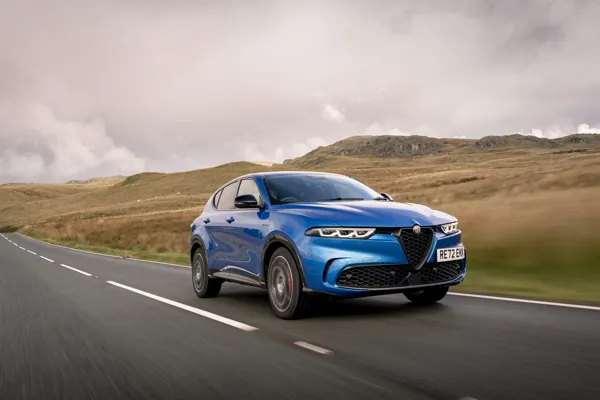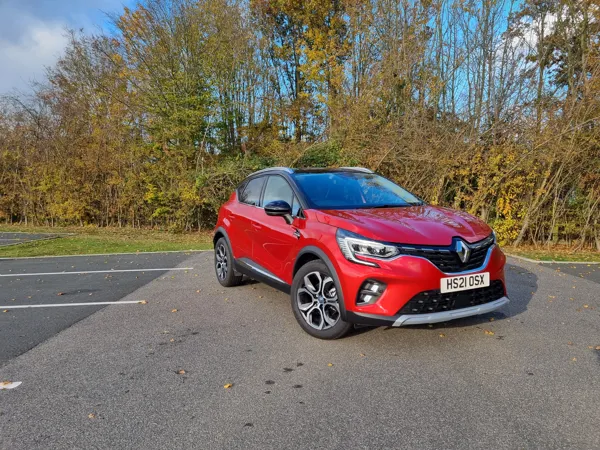Review
I still remember driving a Volvo XC40 for the first time, back in early 2018, when the car first launched. It was snowing heavily, getting dark and I was 80 miles from home.
It impressed from the off, taking the less-than-ideal conditions in its stride. Our only criticism was that its diesel engine was a little noise and less efficient than we’d hoped.
Today, you can no longer get an XC40 that’s fuelled by diesel. Plug-in hybrid models make up the bulk of the range and, aside from the entry-level T3 petrol, all XC40s now have a plug.
The range-topping XC40 Recharge T5 comes fully-loaded with equipment, rides on smart 19-inch alloy wheels (or the optional 20-inchers as fitted to our car) and offers the strongest performance outside of fully electric models.
During our test it’s proven to be just as efficient as the lower powered (and lesser equipped) T4 model that we had before, while providing a slightly better driving experience. The more potent engine comes with a small increase in running costs for both fleet and driver, however.
Volvo’s plug-in hybrid powertrain makes use of an 8.5kWh (useable) battery, which is cleverly integrated into the car’s transmission tunnel. It means the XC40 has one of the largest boots in its segment and there’s little impact on driveability.
With a smaller battery than rival cars, the XC40’s electric range is less competitive. We’ve been getting around 20 miles per charge – officially the range is 28 miles. While most rivals fail achieve the 40-mile threshold to fall into the 8% BIK band, the Volvo still lags behind others when it comes to zero-emission capability.
Newer rivals from mainstream brands, like the Hyundai Tucson and Kia Sportage plug-in hybrids, are bigger, cheaper and can easily cover 30 miles per charge. They may tempt drivers who aren’t as badge precious.
There’s also the Audi Q3 TFSIe, BMW X1 eDrive25e and Mercedes GLA250e, which are all commendable alternatives at the premium end of the market.
Each car has its own merits and the Volvo XC40 is not without honour. It’s effortless to drive, has a practical and well laid-out interior and a characterful powertrain.
The mid-spec XC40 T4 still offers all the core things that we love about the XC40, and stacks up more competitively against rival cars from a financial perspective, but the T5 is the car we’ll miss more.
Of course, it’s hard to overlook the fully electric XC40. A mid-range Plus model has cost parity with our T5 car, over a four-year cycle, provides similar performance and has a real-world range of around 200 miles.
Makes long journeys effortless
The wheels of our XC40 have barely stopped spinning this month. We’ve piled on more than 1,500 miles, including a couple of lengthy trips to the south-west of England for various events.
One of the XC40’s finer attributes is its ability to cover motorway miles with ease. The high driving position provides a great view of the road ahead, while the various assistance systems – including adaptive cruise control, lane centring and blind spot monitor – help keep things in check.
Of course, we have to mention the rather excellent Harman Kardon speaker system, which, combined with the XC40’s built-in Spotify app, ensures you’re never left without music.
Once you leave the motorway and head onto one of Britain’s many A-roads, the XC40 continues to impress. It’s responsive, with a noticeable boost from the electric motor delivered when the accelerator is fully depressed. For a higher riding SUV, the XC40 is surprisingly engaging. Its steering is a little light, but switch to the Power drive mode and things feel tighter.
Fuel economy has continued to hover around the 40mpg mark, as a lack a shorter journeys has meant we’ve not been able to make best use of the car’s electric range. It still means we can cover around 400 miles before needed to fill-up, almost double the real-world range of an electric XC40.
The ability to pre-heat the car via the Volvo Cars app remains a favourite feature during the colder months – it really is one of the best apps currently out there – although, we’re looking forward to the opportunity of opening the panoramic sunroof as the weather improves.
I had the chance to drive the XC40 back-to-back with a VW Tiguan e-Hybrid, too. Both cars offer similar efficiency, but the Volvo feels more upmarket and its powertrain is stronger. The Tiguan, however, can be had for £9,000 less, so it’s better compared with the less powerful XC40 T4.
Volvo XC40 Recharge T5 joins our fleet
This range-topping XC40 plug-in hybrid packs an extra 51PS over the T4 model we've just said goodbye to, while promising the same fuel economy and electric range.
The power increase comes from a software tweak to the 1.5-litre three-cylinder petrol engine. The electric motor and battery are exactly the same as the T4’s, so we’re expecting between 18 and 24 miles on a full charge and fuel consumption in the mid-40s.
Following a round of updates its the model line-up, Volvo will only pair the T5 engine with it’s Ultimate trim level, priced at £49,095. Customers can specify whether they want chrome or gloss black details, 19- or 20-inch wheels and leather or part leather upholstery. All the option packs that were previously offered on the XC40 come as standard at this level, including a panoramic sunroof, 360-degree parking camera and Harmon Kardon Sound system.
First impressions of the new car are that the ride is much smoother than the T4’s. Despite sitting on 20-inch alloys, the T5 seems to glide over bumps more gracefully than our last car (which rode on 19s). We’ve also found the steering to be more precise and slightly weightier, improving the already impressive driveability.
The extra performance is welcome, knocking more than a second off the 0-62mph time, but we’re still noticing an intermittent lag from the seven-speed automatic transmission that plagued our last car.
From a running costs perspective, the T5 will cost drivers an extra £15 per month in BIK over the T4 ‘Plus’ while fleets will pay an extra £124 per year in Class 1A NICs and 7p per mile in additional running costs. The latter is predominantly affected by the T5’s steeper depreciation.
Despite being five years into its lifecycle, the XC40 remains a frontrunner in its segment.
Specs
| Manufacturer | Volvo |
| Model | XC40 |
| Specification | XC40 SUV PiH 1.5Recharge T5 10.7kWh 262 SS Ultimate Dark Auto7 23MY |
| Model Year | 0.00 |
| Annual VED (Road tax) | £0 |
| BIK List Price | £51,545 |
| CO2 | 50g/km |
| BIK Percentage | 14% |
| Insurance Group | N/A |
| CC | N/A |
| Fuel Type | Petrol Hybrid |
| Vehicle Type | SUV and Crossover |
| Luggage capacity (Seats up) | 5litres |
Running Costs
| P11D | £51,545 |
| Insurance group | N/A |
| Fuel Type | Petrol Hybrid |
| Cost per mile | 124.72ppm |
| Fuel | 8.73ppm |
| Depreciation | 112.66ppm |
| Service maintenance and repair | 3.33ppm |
Rivals
Info at a glance
-
P11D Price
£51,545
-
MPG
134.5 (WLTP) -
CO2 Emissions
50g/km -
BIK %
14% -
Running cost
3 Year 60k : N/A 4 Year 80k : N/A -
Fuel Type
Petrol Hybrid















 Petrol Hybrid
Petrol Hybrid
















